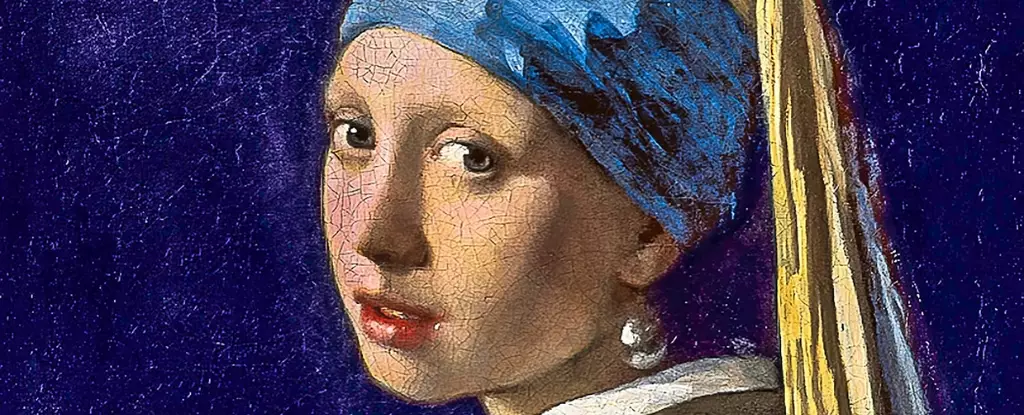Johannes Vermeer’s iconic painting, “Girl With a Pearl Earring,” continues to captivate audiences across the globe. This 17th-century masterpiece, housed in the Mauritshuis museum in The Hague, has not only become a symbol of Dutch art but also a subject of scientific inquiry in contemporary times. Recent research delves into the interplay between visual cues and human psychology, providing insights into why this particular painting holds such a magnetic appeal. Through innovative techniques used in neuroscience, researchers have uncovered intriguing brain patterns when individuals engage with this work of art.
To understand the painting’s allure, neuroscientists employed technologies like EEG and MRI to scrutinize viewers’ brain activity as they gazed upon “Girl With a Pearl Earring.” This landmark study, conducted by Neurensics, identified a phenomenon dubbed the “Sustained Attentional Loop.” This term refers to the way the viewer’s eyes are involuntarily drawn around the painting—first to the girl’s striking gaze, then to her mouth, across to the pearl, and back again. According to researcher Martin de Munnik, this cyclical pattern creates a compelling visual experience that extends the duration of viewer engagement. Participants in the study found themselves irresistibly focused on the painting, experiencing an involuntary emotional connection that seems to deepen with time.
Further investigation revealed that the precuneus, a brain region associated with self-awareness and consciousness, exhibited heightened activity when viewers engaged with the painting. De Munnik highlighted that the brain’s response to Vermeer’s piece was significantly distinct from reactions elicited by other artworks. The prevailing theory suggests that the longer one observes the girl, the more aesthetically pleasing she becomes, reinforcing the sense of intrigue and attraction—an observation that might explain the painting’s status as a cultural icon. The science shows that the engagement with this particular artwork can provoke feelings of beauty and preference that other paintings might not evoke to the same extent.
Another crucial aspect of the study was the comparison of emotional responses elicited by the original painting and its reproductions. The findings were striking: viewers felt ten times more emotionally connected to the original piece. This insight underscores the importance of experiencing authentic art, a sentiment echoed by Mauritshuis Director Martine Gosselink. She stressed the neurological benefits of engaging with original artworks, stating that such interactions serve to enhance cognitive development. The emotional weight of the experience is not only significant for appreciation but also crucial for personal growth.
Vermeer employed unique techniques in his artwork that set it apart from his contemporaries. Unlike many of his other paintings where the subjects appear engrossed in daily activities, “Girl With a Pearl Earring” presents a direct, intimate connection with the viewer. Gosselink pointed out that this painting is characterized by multiple focal points—the girl’s eye, her mouth, and the glistening pearl—that all serve to reinforce her enigmatic presence. While other works might depict characters in action, here, the subject’s gaze seems to actively engage with the observer, creating a deep sense of connection and allure.
Future Research Directions
With the positive results stemming from this initial study, there is potential for broader applications. De Munnik expressed interest in extending this research to other globally recognized artworks, such as Leonardo da Vinci’s “Mona Lisa.” As art historians have often placed these two works in a friendly rivalry, understanding the neurological responses to both could illuminate the unique qualities that contribute to their fame. Gosselink humorously suggested that perceptions may be shifting, with “Girl With a Pearl Earring” perhaps being regarded as “the Mona Lisa of the North.”
As art continues to evolve and gain new interpretations through the lens of science, Johannes Vermeer’s “Girl With a Pearl Earring” embodies the rich intersection between aesthetics and neurology. The compelling and unique features of this painting do not merely reside within its pigments but extend into the emotional landscapes of those who view it. As researchers deepen their inquiries into the relationship between art and the human mind, knowledge about artworks such as Vermeer’s not only enriches our understanding of individual pieces but also underscores the timeless power of visual art in fostering human connection and consciousness.


Leave a Reply